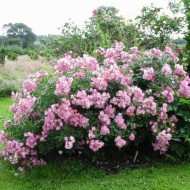How to make a rose garden in the garden: features of growing ground cover roses
Content
General information about ground cover roses
Ground cover rose differs in that the width of the bush exceeds the height. Creeping shoots cover the space around the center, creating the appearance of a carpet of flowers. The length of the shoots of this plant can exceed 2 m. When the flower-bearing period begins, the antennae of the plant are covered with many beautiful buds. These buds are relatively small in size, rarely exceeding 5 cm in diameter. The color of these roses can be varied - from milky white to purple-red.

The leaves of ground cover roses have a dense structure and a rich green color. They remain on the stems of the shoots for quite a long time, sometimes they do not fall off for the winter.
Video "How to create a rose garden in the garden"
In this video, you will learn how to create a rose garden in the garden with your own hands.
Most popular varieties
Breeders have bred many varieties of ground cover roses, which differ in the width of the shoots, the color of the petals and the lifespan. Planting and caring for the proposed plants will not be difficult.
Amber Sun
This small creeping rose has beautiful flowers of yellow tones. The plant grows up to half a meter. With cute branching bushes, the rose blooms for a long time, is resistant to diseases and tolerates cold winters. Gardeners love to plant it in their plots.
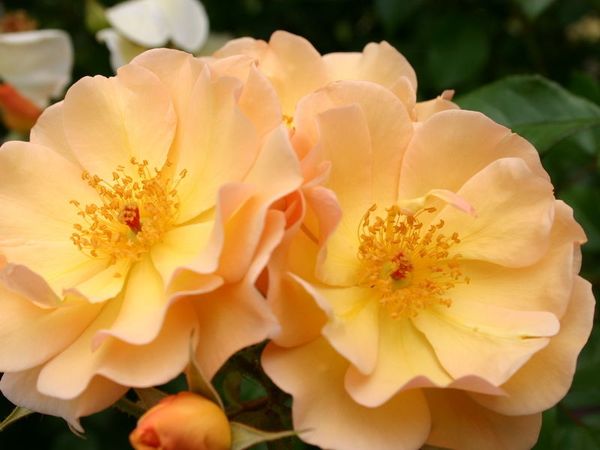
Ahtiar
Planting this variety of rose bush will delight you with its result. The plant has a great height and rather long shoots, reaching 1.5 m. Flowers are grouped in small inflorescences. This variety is usually used to decorate live borders and hedges.
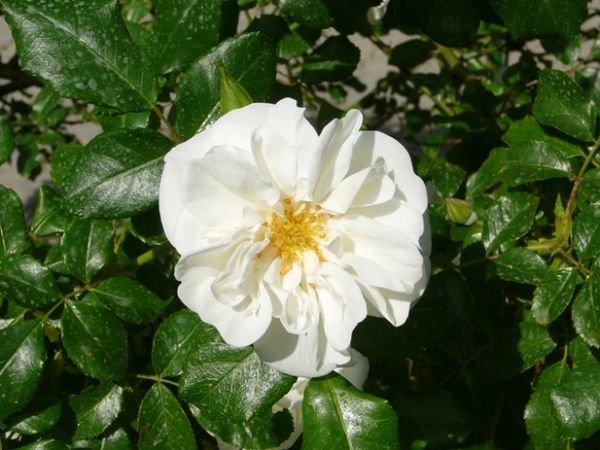
Ballerina
These plants have tall bushes reaching 2 m. The crown is dense and has round outlines. The flowering period of this bush is very long, until the onset of cold weather. The plant is resistant to various diseases and drought. The buds are white-pink in color with a slight musk scent.
Bessy
The plant of this variety is extremely small in size. The inflorescences are compact and have a wide range of colors. This rose never gets sick and is easy to care for. Most often, this beautiful rose is used to decorate pots.
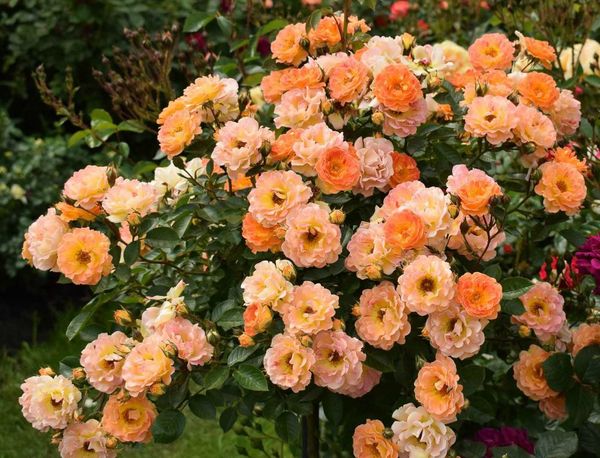
Matador
This variety is characterized by the presence of small half-meter bushes. Its delicate double buds are bright red in color. The plant blooms before everyone else and practically does not get sick. The variety is extremely hardy to external conditions.
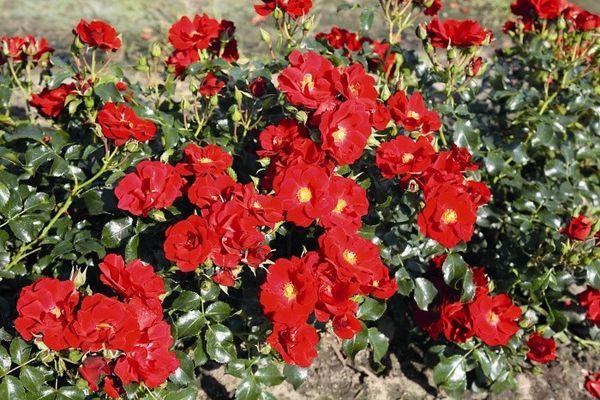
Swany
This pretty pink plant is tall, almost up to a meter. Its dense crown is spherical, with a two-meter diameter.Swanee's leaves are small, shiny, do not fall off in winter. The inflorescences are characterized by a strong pleasant aroma and white-pink color.
This shrub is widely used for decorative purposes, it tolerates winter well.
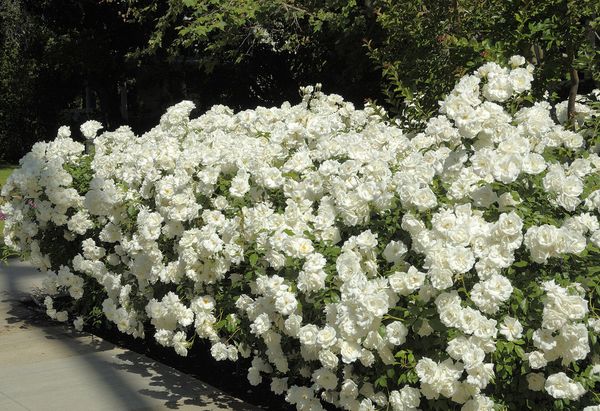
Scarlet
This variety best adapts to external conditions and requires almost no maintenance. Its bushes are small in size. The leaves are dark green with a glossy sheen, and the buds are bright red. The plant is distinguished by abundant flowering throughout the summer and autumn.
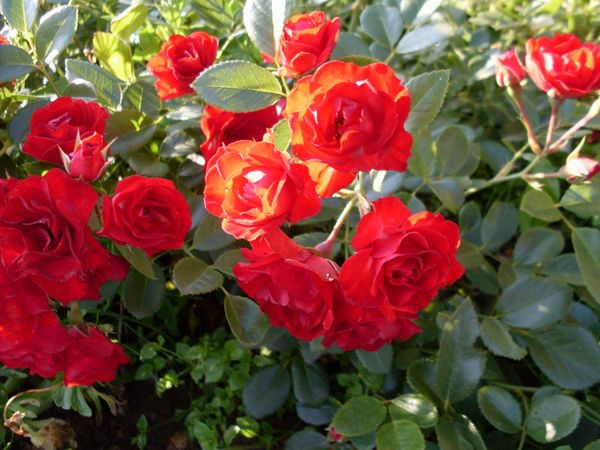
Halloween (Hello)
Roses of this variety bloom very profusely, their buds are dark red with high doubleness. The flowers do not emit a smell. These plants are planted for decorative purposes in flower beds.
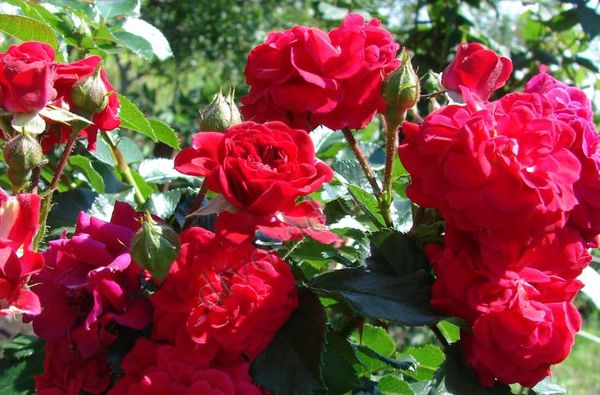
Fairy
If this plant is planted in the ground, then it will quickly take root. Its antennae are fast growing and reach a height of up to half a meter. The flowers of this rose are white and pink in color. The period of active flowering lasts from the beginning of summer to the first cold weather.
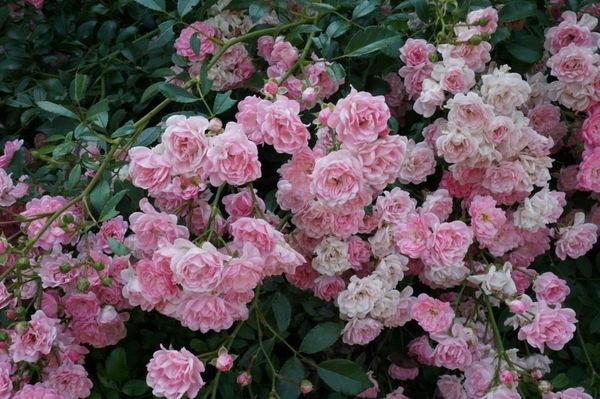
Fiona
These rose bushes are almost a meter high. The branches bend like arcs. The flowers have a strong aroma and intense pink color. The flowering period begins in July and lasts until the first cold weather. The plant is resistant to various diseases.
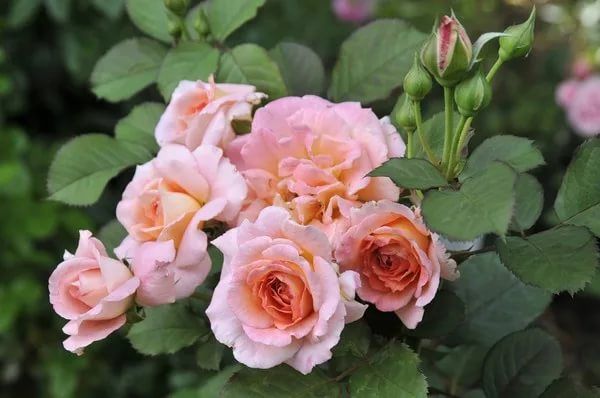
Planting ground cover roses
Unlike the classic rose bush, ground cover varieties are unpretentious, their cultivation does not require special care. But these plants also have a number of features, which we will talk about.
Determination of terms
These plants require proper planting timing. It is best to plant roses in late spring or mid-September. In areas of the central strip and northern regions, it is necessary to plant flowers in the spring. This will allow the roses to gain strength and put down strong roots.
If the planting date is chosen correctly, then the plant will be strong and healthy, delighting you with its inflorescences.
Site and soil selection
Before planting ground cover bushes, you must choose a planting site. Experienced growers give the following recommendations:
- These plants love when there is a lot of light around. Good lighting is especially important in the morning. Therefore, take care of sufficient illumination of the area. Do not plant roses in low-lying or shady areas.
- When choosing a soil for planting, stop at chernozem substrates or slightly acidic loams. If you have minimal knowledge of agricultural technology, you can easily prepare any soil for growing plants.
- The varieties of these plants do not tolerate much moisture. To do this, take care of good drainage of the site, groundwater should not lie too close. You can also make special raised flower beds.
- If a large amount of alkaline compounds is present in the soil substrate, it is unsuitable for planting flowers. To do this, make deepened planting holes, and then fill them with cooked black earth or loam. If roses have been growing on the site for more than 10 years, do the same steps.
- Know that groundcover roses love space. Before the planting process, study the maximum width that their antennae spread out. Disembark with these recommendations in mind.
In order to properly plant these plants, prepare the soil at the end of the year. Cultivate the future site to a depth of half a meter, remove all weeds and roots. Small stones and rubble do not need to be touched, they will not interfere. If the soil is already depleted, then use fertilizers such as humus or manure. When the soil is acidic, sprinkle it with lime or ash.
Preparation and planting of seedlings
If your plans do not include immediate planting of plants immediately after purchasing seedlings, then cover the roots with a damp cloth, and place the bushes themselves in a cool room.This will protect future roses from drying out and future diseases.
If you have an open-rooted seedling, soak it in cool water before planting. It is recommended to do this two hours before disembarkation. Growth stimulants can be dissolved in liquid. This will be useful for the plant.
Pinch off all damaged and weakened branches and leaves from the seedling. Before pruning the shoots, you should find healthy buds on the stem that point outward. There and make an oblique cut at a height of 10 cm.Cut off the black roots, and make the rest 30 cm long.
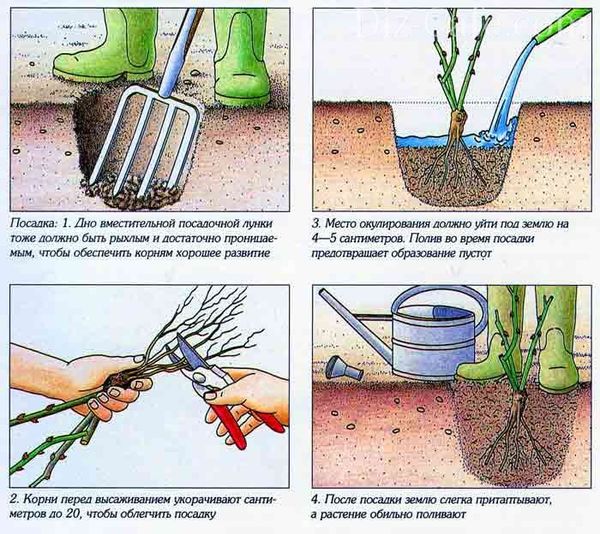
Until the very moment of planting, do not throw the roots of the plant in an open form. This will damage the future rose!
Dig shallow holes for future seedlings, up to 30 cm deep and 60 cm in diameter.Pour two or three shovels of the planting mixture at the bottom of this hole. Plant the seedling itself and spread its roots. Top up the soil in several stages. Compact the soil very carefully so as not to damage the roots of the plant, and water well with water. We need at least 10 liters of liquid. Be sure to make a small mound of soil around the stem of the plant.
Caring for ground cover roses
These plants do not require special care, but they also need to be treated with care. You must periodically take care of these roses, then they will not get sick and will not die.
Watering and mulching
After the rose is planted, it is necessary to perform the soil mulching procedure. For these purposes, humus or peat should be used. The procedure will prevent moisture from evaporating, prevent weeds from multiplying, and caring for the plant will be much easier.
If you often and abundantly water the planted rose bushes, then in vain. Frequent watering of the plant is recommended only during the long absence of rain. When you water these flowers, use at least 10 liters of water for each bush.
Loosening and weeding
For the varieties of roses described here, the procedure for loosening the soil is difficult. After all, their shoots and antennae cover the entire area of the soil around them. Therefore, you must cultivate while the antennae are not yet present.
Top dressing
When you remove the winter protection from the bushes, start the process of feeding with fertilizers containing nitrogen. When the plants begin to form flower buds, use a dedicated rose mineral kit. This complex can be replaced with an infusion of chicken manure or cow dung.
At the end of the first wave of flowering, feed again with nitrogen fertilizer. If this is not done, then the bushes will continue to grow, and their shoots will not form until the onset of cold weather.
In late summer and early autumn, water your roses with fertilizers containing potassium and phosphorus. This increases the frost resistance of plants and protects them from diseases.
Pruning and rejuvenation
Bushes that are planted in the fall do not need to be pruned. In the process of leaving, minimal pruning is required in order to form a beautiful crown of the plant. Damaged and dead tendrils need to be removed.
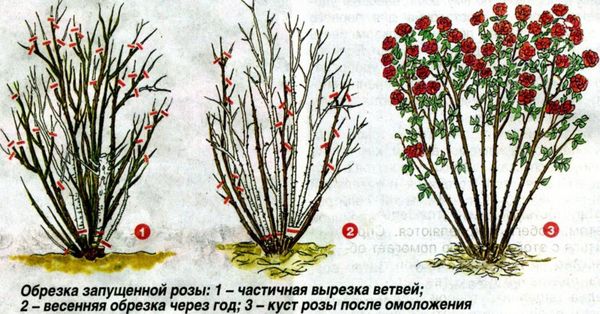
When the pink shoots are old, you can remove some of them in early spring, or cut off all branches every 6 years, leaving 10 cm from the shoot.
Shelter for the winter
Despite the fact that most ground cover varieties of roses are frost-resistant, it is recommended to cover them for the winter. This will allow the plants to survive the cold season.
Reproduction of ground cover roses
Like any garden plant, the rose requires special propagation methods.
Layers
In early spring, press two or three tendrils to the soil, secure them and dig in. The top should be outdoors. Moisten the soil throughout the summer. You do not need to perform any more actions.Separate the young plants the next year and replant.
Cuttings
In early fall, prepare cuttings from the stems of mother plants. Remove thorns and leaves from them, plant in a black earth substrate. After placing the cuttings in a warm place, remove the buds and leaves that appear. In late spring, plant ready-made cuttings with roots for permanent residence.
Groundcover roses in garden design
Landscape designers and gardeners often use these roses in their exteriors. By creating alpine slides or living curbs, they achieve a high aesthetic component of the site. Roses planted in pots also bring joy and beauty to those living in the house.
There is nothing difficult in planting and caring for ground cover roses. Even a novice gardener can easily cope with this task. Decorate your lot with the queen of flowers and rejoice!

